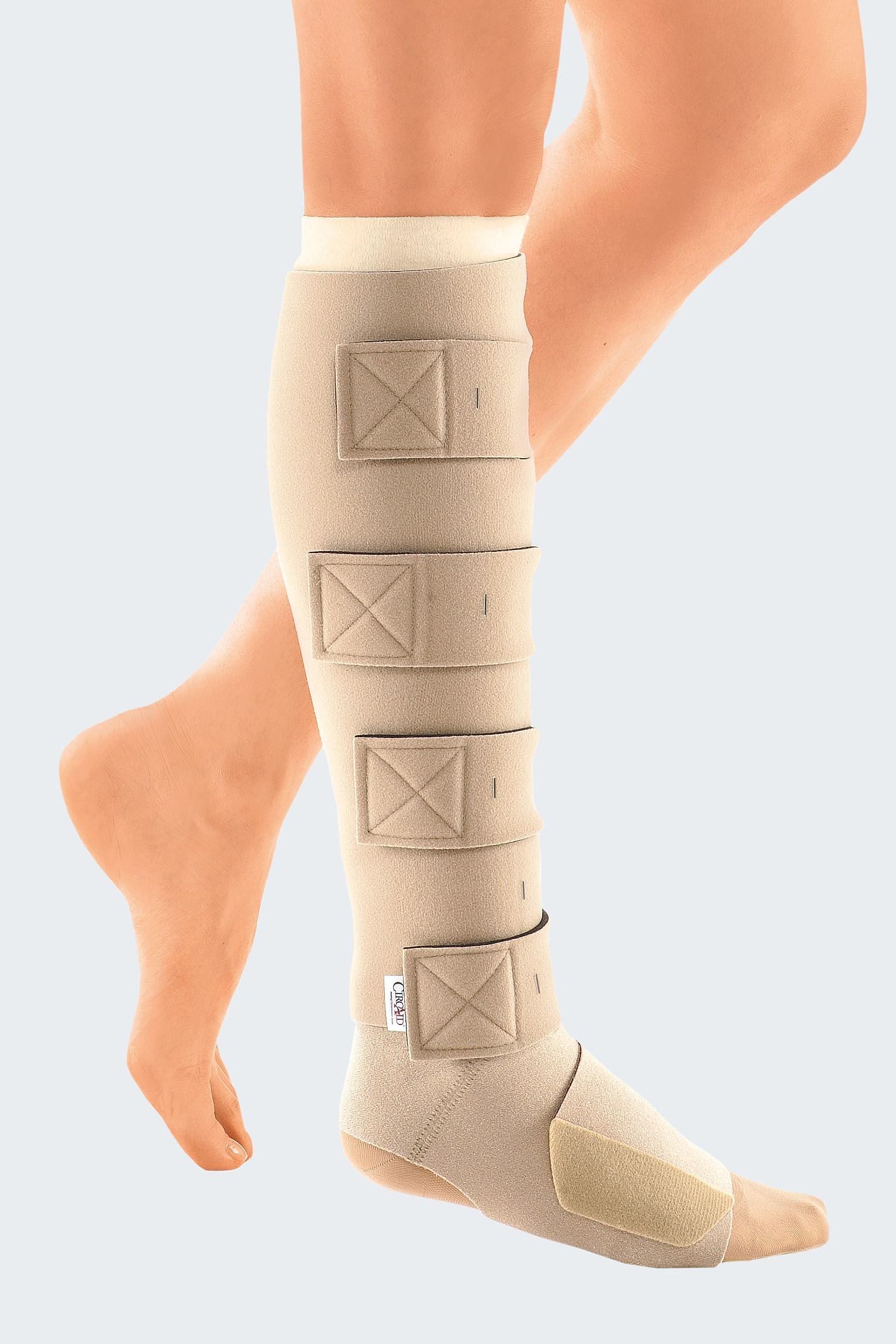


While thigh high compression stockings for lymphedema in legs may be difficult to put on and take off, there are an array of compression garment donning and doffing aids which will help you to easily wear them.

Class III: 40 - 50 mmHg – for severe or hard to control lymphedema.Class II: 30 - 40 mmHg – for moderate or severe lymphedema.Class I: 20 - 30 mmHg – for those at risk, or who have early or mild lymphedema.Class 0: 15 - 20 mmHg – for those at risk for lymphedema.Compression is measured in units referred to as millimeters of mercury or "mmHg", and should selected for treatment as follows. Remember LymphConnect has lots of information about the lymphatic system.Compression garments for legs and lymphedema stockings for legs are made in a variety of sizes and colors and these upper thigh compression garments are especially designed to fit the various anatomical structures of the leg.Ĭompression garments for thighs and lymphedema stockings for legs are rated as to the amount of compression they apply, and when selecting your thigh garment it is important to choose the correct compression level that is required. Once the swelling has reduced you should be able to go back to using a compression garment. If you are not able to wear a compression garment your lymphoedema specialist may suggest other types of treatments to reduce the size of your limb. Similarly, if you notice a change in the colour or temperature in your fingers or toes or any new symptoms such as tingling, numbness or pain in your limb, remove your garment immediately and contact your lymphoedema therapist for advice. If your limb becomes unusually swollen or an irregular shape you may need to stop wearing you garment and contact your healthcare professional, as Ill-fitting garments, such as wearing one that is too small, can be restrictive and cause complications. However, if compression is not applied regularly to the tissues, your limb size and shape may begin to deteriorate, and your current garment may no longer fit and will not be as effective as it should be. If garments are used as instructed, and not left off for long periods of time, your limb should not swell. In certain cases, night-time compression may be prescribed and uses alternative methods of compression. standing frames arm, leg and spinal braces reciprocating gait orthoses. Regular, daily use of the compression garment is typical, and garments are usually applied in the morning, worn during the day and taken off at night. Get help paying for compression garments, lymphedema pumps and custom orthotic. You should wear your compression garment as instructed by your lymphoedema specialist. It may feel snug but supportive and comfortable. Once your hosiery is on it should feel firm but not tight.
#Leg compression garment how to
You will be shown how to put your garment on and take it off correctly to ensure that you do not damage your limb or the garment. They will select the type of garment and the amount of pressure that is suitable for your condition and your lifestyle. Your compression garment should be measured for you and fitted by a specialist to make sure it fits correctly. Garments are used to control the oedema and limb size should not increase whilst wearing a compression garment in fact, on occasions, it may be reduced.įor the garment to have the desired effect, it should not be too loose nor too tight. These garments apply graduated pressure to the limb and when the muscles contract, the counter pressure of the garment increases the pressure within the tissues, enhancing lymph drainage, helping the fluid to move more effectively and in the right direction. Compression in the form of a sleeve for an arm and a stocking for a leg is a common part of the treatment regime for patients with lymphoedema.


 0 kommentar(er)
0 kommentar(er)
